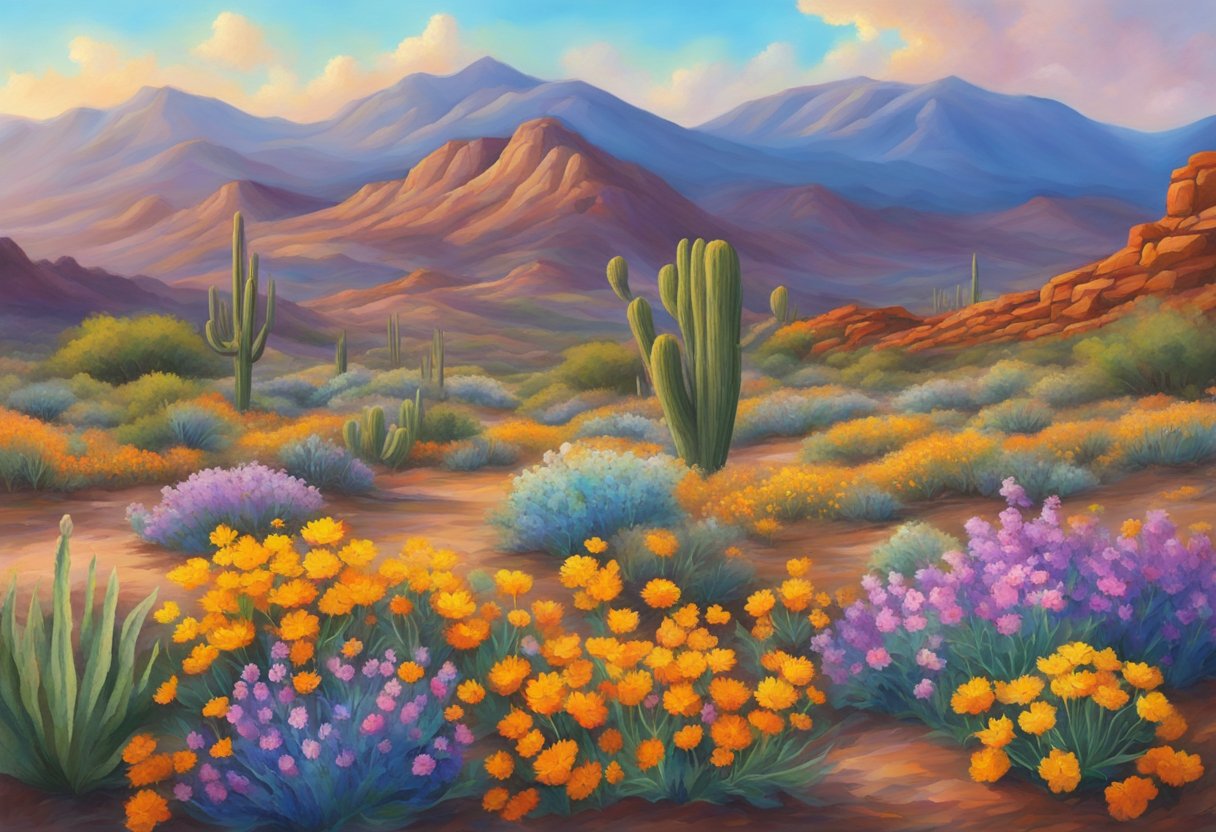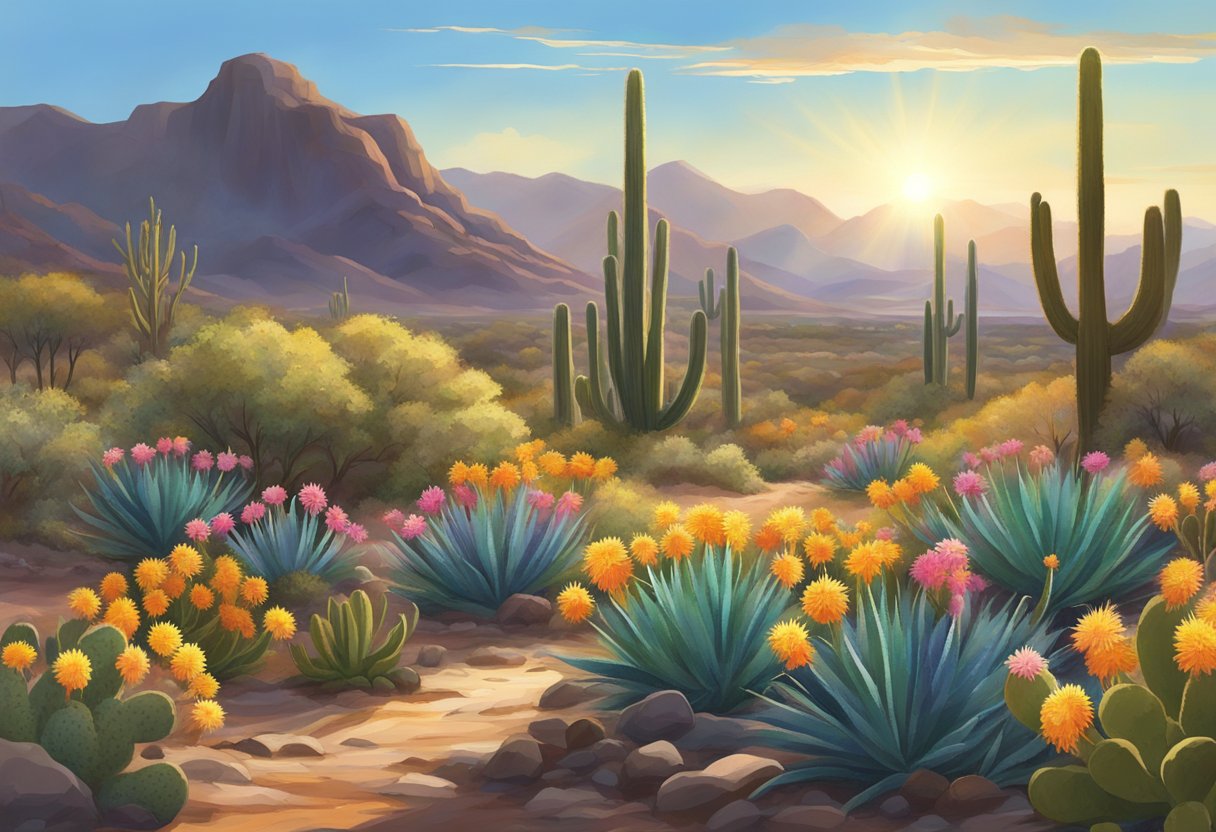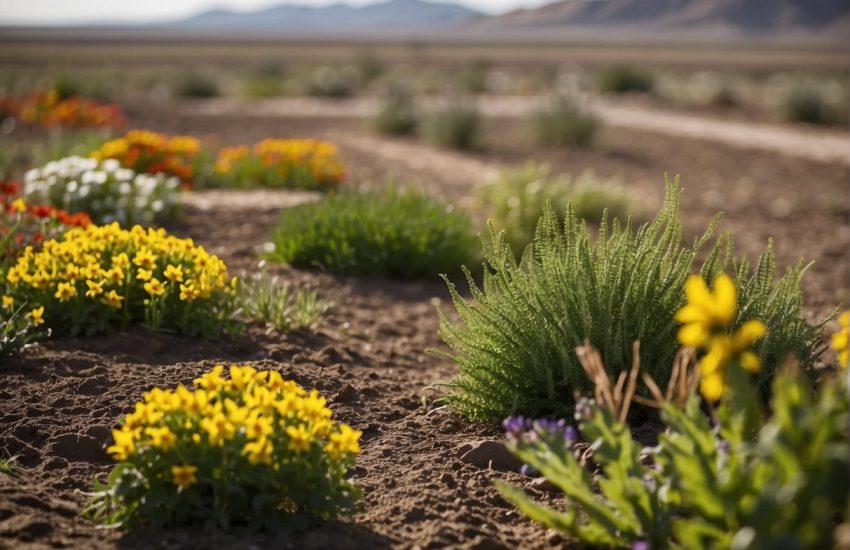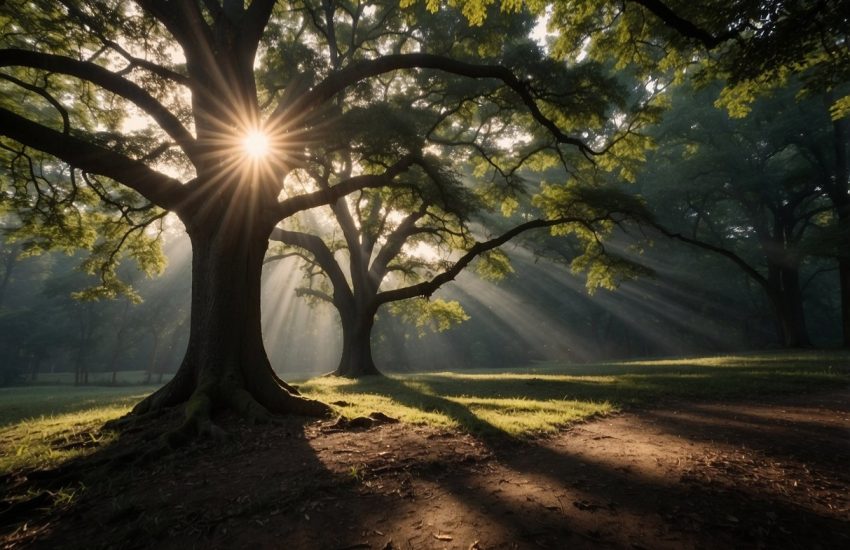Sonoran Desert Wildflowers: A Guide to the Region’s Colorful Blooms
The Sonoran Desert is known for its unique and diverse flora, with wildflowers being a particularly stunning feature of the landscape. March, April, and May are the prime months for wildflower viewing in the Sonoran Desert, with a variety of species blooming during this time. From vibrant orange poppies to delicate lupines, the desert floor comes alive with a riot of colors.

Arizona is home to some of the most spectacular wildflower displays in the Sonoran Desert. The state’s warm climate and arid conditions provide the perfect environment for wildflowers to thrive. Visitors can explore a range of habitats, from the low desert to the high country, to witness the different species of wildflowers that bloom in each area. The diversity of the Sonoran Desert wildflowers is truly remarkable, with over 2,000 species found in the region.
Whether you’re a nature lover, a photographer, or simply seeking a peaceful escape, the Sonoran Desert wildflowers are a sight to behold. With their vibrant colors and unique adaptations to the harsh desert environment, these wildflowers are a testament to the resilience and beauty of nature.
Ecology and Habitats

Climate and Rainfall Patterns
The Sonoran Desert is known for its hot and arid climate, with temperatures ranging from 100°F in the summer to 40°F in the winter. The region receives most of its rainfall during the winter months, with occasional summer monsoons. The amount of rainfall varies greatly across the desert, with some areas receiving less than 3 inches per year while others receive up to 12 inches.
Flora Diversity Across Elevations
The Sonoran Desert is home to a diverse array of plant life, including desert wildflowers. The flora diversity changes with elevation, with annuals and perennials blooming in the lower elevations, and cacti and trees dominating the upland areas and higher elevations.
Adaptations to Desert Conditions
Desert wildflowers have adapted to the harsh desert conditions in a variety of ways. Many have deep root systems that allow them to access water deep underground, while others have evolved to bloom quickly after winter rains. Some species have even developed the ability to store water in their leaves or stems.
Wildlife Interactions
Desert wildflowers provide important resources for many species of wildlife, including hummingbirds, butterflies, and birds. Some species of fish even rely on the seeds of desert wildflowers as a food source. However, some animals can also pose a threat to wildflowers, such as grazing cattle or invasive species.
Conservation and Preservation
Many areas of the Sonoran Desert, including state parks like Picacho Peak State Park and the Phoenix Sonoran Preserve, are protected to ensure the preservation of the unique flora and fauna of the region. Visitors to these areas are encouraged to stay on designated trails and avoid disturbing the delicate ecosystem.
Recreational Opportunities
Hiking trails and other recreational opportunities are available in many areas of the Sonoran Desert. Visitors can explore the desert landscape and observe the wildflowers and other wildlife in their natural habitats. Many museums and websites also offer information about the flora and fauna of the region.
Photography and Observation Tips
To observe and photograph desert wildflowers, it is important to visit during the blooming season, which typically occurs in the spring. Visitors should also be aware of the best times of day for lighting and bring appropriate gear, such as a macro lens for close-up shots. It is important to respect the natural environment and avoid disturbing the plants or wildlife.
Blooming Seasons and Viewing
Monthly Blooming Patterns
The Sonoran Desert is home to a vast array of wildflowers that bloom throughout the year. The blooming season begins in late February and lasts until May, with a second wave of blooms in November. During these months, the desert landscape transforms into a colorful display of vibrant blooms.
In February, the desert floor is covered in a carpet of yellow brittlebush and lupine. As March rolls in, the towering saguaros and chuparosa shrubs come to life with pink and red flowers. Poppies and desert marigold add flashes of white and yellow to the mix.
April is the peak blooming period, with a profusion of wildflower blooms all over the desert. Encelia farinosa, globemallow, and Mexican gold poppy are some of the notable species that bloom during this time. In May, the desert begins to wind down, with baileya multiradiata and creosote bush taking over the landscape.
Peak Blooming Periods
The peak blooming period in the Sonoran Desert varies depending on the location. In Tucson, the peak blooming period is usually in late February and early March. Picacho Peak, located between Tucson and Phoenix, is famous for its wildflower displays in March and April.
The riparian areas of the Sonoran Desert, such as those along the Santa Cruz River, bloom later in the season, usually in April and May. These areas are home to phacelia distans, beloperone, and desert tobacco.
Notable Wildflower Species
The Sonoran Desert is home to a diverse range of wildflower species. Some of the most notable species include lupinus sparsiflorus, penstemon, saguaros, ocotillo, and sacred datura. The pincushion cactus, desert chicory, desert paintbrush, and chia are also common in the region.
The desert globemallow, barrel cactus, and Arizona wildflowers, which belong to the sunflower family, are other notable species that bloom in the Sonoran Desert. Echinocereus, with their vibrant pink and red flowers, are a popular sight during the blooming season.
Other notable species include stalks of castilleja integra, justicia californica, scorpionweed, flat buckhorn, Carnegiea gigantea, hairyseed bahia, cryptantha angustifolia, bluedicks, desert sunflower, isocoma tenuisecta, burroweed, nama demissum, and many more. The Sonoran Desert is truly a wildflower lover’s paradise.


